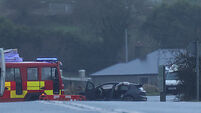Fewer children smoking, study finds
The all-Ireland report, A Tobacco-Free Future, focused primarily on children and pregnant women and found declines in smoking rates among both groups north and south of the border over the past decade.
However, it also showed that children born into an economically-disadvantaged household are more likely to breathe second-hand smoke at home, and are also more likely to try smoking at a younger age.













